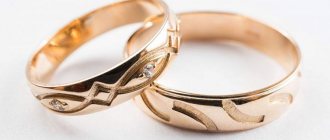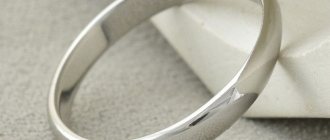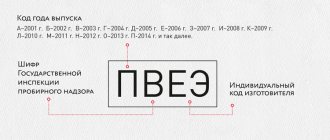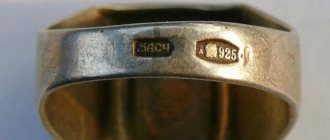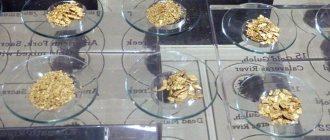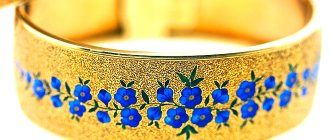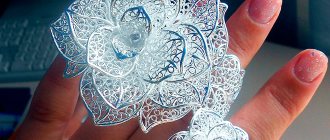It is believed that gold is the first metal with which man became acquainted in history. It is not surprising, since the main method of its extraction is to search for ore in its native state. This noble yellow metal is used not only as jewelry. The domes of churches and crosses playing in the sun, the decoration of majestic icons, the decoration of external elements of buildings, as well as the framing of high-status furniture and other interior items - the technology of gilding the surface with gold leaf is most often used.
Susal - what does it mean: origin, definition of the word and its meaning
Gold leaf - what few people know, since its widespread use in the modern world began relatively recently. Metal is the thinnest sheets that can be used to coat different materials, creating a gilded effect.
The first mention of this material was discovered several thousand years ago in China. The popularity of this type of gold is due to its easy production. The metal's natural softness and malleability made it easy to cast into thin, continuous sheets.
Gold paper for decoration
Next, the ancient peoples of Egypt, India, and Greece learned about metal and its use. Already in the 10th century, tinsel began to be produced in Rus'. At that time, working with this type of gold was a separate craft, which was used in interior decoration, many household items, and architecture.
The name gold leaf comes from the ancient Russian word susal (translated as face), since such sheets were used to cover exclusively the front side of various objects.
How to use gold leaf in painting
If you have no experience with gold leaf, using gold leaf in your own practice can seem intimidating. However, with just a few simple steps, you can turn your finished painting into a superb masterpiece.
PREPARE YOUR SURFACE.
Use a regular brush to apply glue to your painting. You only need to peel it into the sections that you will be covering with gold leaf.
ADD GOLD LEAF.
Once the glue is tacky you can apply the gold leaf. You want to handle the material as little as possible, so using tweezers or another application tool is recommended.
USE A BRUSH TO POLISH THE GOLD LEAF.
This will remove any excess gold from your design. Be sure to save the leftovers for your next painting!
The use of gold leaf in art dates back to ancient cultures. In Egypt it was used for its aesthetic value and adorned statues of gods, precious amulets and other sacred objects placed in the tombs of the pharaoh.
“Heart Scarab with a Human Head” (Photo: Met Museum (Public Domain))
Roman medallions and pendants featured secular images of people depicted in gold leaf. A similar approach to gilded portraiture is also found in Byzantine art, although these works often depict Christian iconography.
“Medallion with a Portrait of Gennadius” (c. 250–300) (Photo: Met Museum (public domain))
"Chalice stand with Saints Peter and Paul flanking a column with a Christogram of Christ" (circa 4th century) (Photo: Met Museum (Public Domain))
Byzantine artists continued to use this medium in religious images, including their well-known gold paintings. In these works, sheets of gold leaf were used to create the background, causing the figures to appear to float on the celestial sky.
"Mark the Evangelist Seats in His Study" (c. 1025–1050) (Photo: Walters Art Museum via Wikimedia Commons) (PD-1923])
During the Middle Ages, the gold base style was also used in panels and altarpieces depicting the Madonna and Child. This was popular until the Renaissance, when artists began to reject this transcendental aesthetic in favor of naturalism.
Simone Martini, Madonna and Child (c. 1326) (Photo: Met Museum (Public Domain))
In addition to religious icons, gold leaf was also used in illuminated manuscripts during the Middle Ages. Illuminated manuscripts are handwritten books enhanced with illustrations, decorative borders, and other embellishments, such as compound initials, intended “to identify important passages or to enhance or comment on the meaning of the text.”
"Illuminated Psalter" (late 1100s) (Photo: Metre Museum (public domain))
"Master of the Brussels Initials" (1410-1420) (Photo: Metre Museum (public domain))
In the 16th and 17th centuries, Japanese artists incorporated gold leaf into paintings found on folding screens. Likewise, they began painting directly onto gold leaf paper to create their own images on gold soil.
In modern art, the use of gold leaf is most often associated with the Austrian artist Gustav Klimt. As a member of the Secessionist movement and a pioneer of symbolism, Klimt created experimental and ethereal paintings, resplendent with golden patterns and golden planes.
Today, artists continue to use the medium in an eclectic range of work, from scientific art to massive murals. Like the gilded creations of yesteryear, these precious pieces showcase the endless versatility and timeless aesthetic of shimmering gold leaf.
Photo: Brad Kunkle
Leaf sheets: type and thickness
Gold leaf, the composition of which varies only due to the ratio of the proportion of base metal to the proportion of impurities, can have several shades: pale yellow, white, reddish, orange, greenish. This variety is also achieved by adding small amounts of cadmium, palladium, and nickel. Gold leaf is very thin, its thickness does not exceed 0.5 microns. Most often, sheet material is used for finishing household products and paintings. Recently, it has begun to be used in the beauty industry and medicine.
Leaf sheets of different types
On a mirror frame and in a plate
Gilded details can be a wonderful accent for a modern home, but you need to treat them carefully so that the home interior does not end up looking provocative. For example, the combination of golden accents in a white space is very sublime and at the same time relevant.
With a reasonable approach, this tandem will look airy in the dining room, living room or even the bathroom. A composition in which black and white dominate, and details with gilding also looks great: this could be the finishing of the legs of tables and chairs, picture frames and mirrors, patterns on designer pillows, and so on. The combination of turquoise and deep blue with golden notes looks cute. The main thing is to strictly observe the measure and not allow the golden hue to begin to dominate the interior, otherwise your modern home will turn into a vulgar copy of Madame Pompadour’s salon.
Perhaps the most unexpected area of application for gold leaf is confectionery. Edible gold used as an additive even has its own code - E175. Most often they decorate cakes, using them in the form of shiny flakes or beads. But there is no need to talk about its large-scale production for culinary specialists, since such desserts are very expensive.
Gold leaf standards, composition: European and Russian, chemical formula
For the production of domestic and imported gold leaf, the same formula is used. But the standards and legal requirements for the manufacturing process differ, without which the product is not allowed to be sold.
The Russian standard is indicated by the symbols RS. The product is manufactured in accordance with GOST, which clearly states the composition, quantity of components and sample. The tinsel is in the form of books with 60 sheets.
A European product contains the EU mark, which indicates the foreign origin of the product. The law stipulates that precious books must have 25 sheets measuring 80x80mm.
The chemical formula remains the same regardless of the manufacturer. Leaf alloy includes the following components:
- gold;
- silver;
- copper;
- aluminum;
- zinc.
Pencil gilding
Another “home” method is to use a galvanic pencil in which the tip serves as the anode and the surface of the product as the cathode. The principle of deposition is similar to the electroplating method, but the equipment used eliminates the use of a solution bath.
Noble metal not only decorates products, but also performs protective functions. The gilding process should be entrusted to professionals - lack of experience and the use of dangerous components often leads to undesirable consequences.
4.5 / 5 ( 105 votes)
Fake gold leaf
Leaf consists almost entirely of pure noble metal and the cost of such a coating is quite high. As a result, real expensive precious metals began to be replaced with cheaper analogues.
Application of gold leaf
Existing types of substitutes:
- Double - distinguished by a large amount of silver in the composition. Gold is layered on silver.
- Talma - a layer of leaf is layered on copper.
- Potal - this method allows you to imitate gold plating without adding precious metals. Copper and aluminum (sometimes copper and zinc) are used to make it. Additionally, it is necessary to use a layer of varnish to protect the coating from corrosive destruction.
- Mousse gold (tin sulfide) is a method of creating a gilding effect using metallic paint. This special alloy contains a mixture of sulfur and tin, without the addition of noble metals.
- Titanium nitride - allows you to make the gold-plated coating durable and well protected from external factors. Using nitrogen, you can slightly change the tone of the gilding.
- Gold-plated foil is used relatively recently. The composition contains copper, nickel and cobalt.
Technologies that have passed through centuries
When it comes to gold leaf, experts understand 2 types of coating by this term:
- Clean. Its recipe involves an alloy of 22-karat yellow gold with small impurities of silver, copper or platinum. The color of the finished plates depends on the composition of additional metals: silver gives a greenish tint, copper gives a reddish tint, and platinum adds whiteness. This is the composition of classic gold leaf, which is not in danger of either oxidation or greening.
- False. It is a much more massive sheet, with greater thickness, but only imitates gold: it is an alloy of copper, tin, zinc and aluminum.
Although the finished plates have an attractive appearance and many golden shades, they, firstly, create a rather rough texture with low gloss, and, secondly, are subject to corrosion and patination. To make the coating more durable, it is varnished.
Surprisingly, only in some European countries it was robotized. In most countries, technology continues to remain manual. Its basis is multi-stage forging of a gold bar, as a result of which a foil is created with a thickness of 0.05 microns (manually) to 0.01 microns (machine).
Regardless of how gold leaf is made, the initial step is to melt the metal. Then the liquid is poured into a mold, where it hardens into a plate. Next comes the rolling stage: the precious strip is repeatedly passed through a special machine, each time reducing the distance between the rolls. This allows you to obtain a sheet with a thickness of 25 microns. It is cut and placed between layers of special paper (or leather). And then the gold miners get involved.
This stage can be performed in several ways:
| Way | Process | Result |
| Manual tapping | Produced using a cast iron or stone hammer, by eye | Does not allow achieving perfectly uniform thickness |
| Automatic hammer, with human assistance | Deals about 2 thousand uniform blows, but a person places the stack | Minimizes thickness variations |
| Fully robotic production | The hammer machine is controlled by a computer program at all stages | High precision technology, only available in Germany and Italy |
In this form, films are already suitable for decoration. Now master gilders will take them on and create a unique masterpiece that can be used in a wide variety of industries - from jewelry to cosmetology.
The process of making leaf sheets
To obtain tinsel sheets you need regular gold. The precious ingot is heated, shaped into a cylindrical shape, and then cut into small circles. Each piece obtained is a future leaf leaf. Each circle is separated from the other by a piece of paper.
The entire ingot cut into pieces is collected in a stack, which is placed under an automatic hammer. From the force of blows with a hammer, the pieces gradually turn into cakes of the required thickness. Based on the number of elements, the hammer can deliver up to 2 thousand blows. The resulting sheet is cut into a square shape, forming a book.
It is worth saying that for production of 20 sq.m. For tinsel, it is enough to use a little more than 1 gram of noble metal.
Modern technologies
The technology of gilding with gold leaf has undergone some changes throughout the history of using this material for surface finishing. The essence of the technology for producing tinsel sheets remains the same: a bar of precious metal is rolled into strips, cut into squares, the squares are put into a book and sent under the hammer. New developments make it possible to achieve sheets that are much thinner than those that were produced before. The task of the craftsmen is simplified by the use of computer technology.
Now gold leaf is practically not produced by hand; outdated technologies are a thing of the past. The process of obtaining thin leaf sheets today is completely automated, everything is done by machine. The electric hammer is configured for both the initial beating of sheets and the subsequent processing of precious metal to a minimum thickness. The casings of bovine intestines, which used to be used to wrap tinsel sheets, are also no longer used. Instead, modern plastic forms are used.
In Russia, the production of tinsel is carried out by a non-ferrous alloys plant located in Moscow. There are also private companies producing gold leaf, but their production volumes of material for mechanical gilding are not significant.
To understand what tinsel looks like, just imagine a very thin sheet of foil up to 1.5 microns thick. According to domestic standards, tinsel is produced in square sheets with a side of 91.5 mm. The sheets are laid out in books, the separator between the sheets is tissue paper. Books can consist of 10 or 60 leaf sheets.
In order to imagine how gold leaf should be applied, it is recommended to watch a video accompanied by explanations from the master. Experts distinguish two types of gold leaf: free and transfer. Depending on the type of tinsel, there are differences in working with the material. Free gold is taken out of the book and placed on the pillow, and transfer gold is initially glued to a sheet in the book.
Cost of gold leaf
It is impossible to say exactly how much tinsel costs. Manufacturing plants set prices based on their own production and delivery costs. Initially, the price of pure gold is formed on the London Stock Exchange. The cost of alloys of other samples, for example 960, depends on this figure. And that means tinsel in any form.
Potal gold leaf
Gold leaf stamps
Manufacturers now offer a large selection of multi-purpose leaf coatings. Also, many foreign suppliers offer their products for ordering via the Internet with delivery to Lipetsk, Ufa, Minsk, Samara, St. Petersburg and other remote points of Russia.
German leaf coating Noris
One of the most famous producers of tinsel is the German company Noris. It supplies precious products to Russia and offers a wide selection for ordering through its online store.
Pure Palladium Noris
Pure palladium from the Noris company is produced in the form of a book of 25 pages measuring 80x80mm. This coating is easily polished and protects the surface from corrosive destruction, but is intended only for interior decoration. The price of such a product is up to 3 thousand rubles.
Areas of application of gold leaf
In the modern world, tinsel is still popular and is used in many areas of human activity:
- with its help, electrical circuits are covered: good electrical conductivity significantly extends the service life of many devices;
- gold is actively used by cosmetologists for anti-aging procedures;
- the precious metal is an officially recognized additive used in culinary masterpieces around the world;
- golden glitter is actively used in architecture, for processing three-dimensional objects;
- This coating allows you to focus on individual interior items.
Application of gold leaf
Restoration of icons and paintings
It has long been customary to use tinsel for finishing paintings, icons, and in painting. In this way the artist made his creation unique and luxurious. As a prime example, Leonardo Da Vinci used tinsel to cover his own paintings to protect them from dust, humidity and other damage.
Susal in cooking, food additive E175
Recently, it has become increasingly popular to use gold leaf in cooking. In many countries of the world it is a food additive, which is designated E175 on the packaging. Food with this ingredient is served by elite chefs in expensive restaurants around the world. Precious leaves are used to decorate cakes, sweets, desserts, ice cream, pastries, sushi and even meat dishes. Often tinsel is added to alcoholic, non-alcoholic drinks, and coffee. This supplement is edible and safe for consumption.
It has been proven that gold, when entering the human body, is not capable of causing harm and is excreted unchanged.
Cosmetology
In recent years, tinsel has become an integral part of cosmetic procedures and products. Experts are convinced that its chemical composition can have a certain effect on the epidermis, preserving the beauty and youth of the skin. Using sheets of leaf material, wraps are made for the face and other parts of the body. The procedure has gained popularity among people with various dermatological problems, since it is believed that gold, along with herbs and other components, can improve the condition of the skin in general.
Where is it used
Leaf tinsel is used for decorating interior elements, finishing the interior of churches, gilding domes, crosses and other elements of external decoration. They restore rarities, icons and many antiques with gold leaf. Today, the noble metal is even used in cooking. It has a neutral effect on the human body, so it is used to decorate culinary products (cakes or pastries). In expensive and elite restaurants you can try “golden” coffee or champagne with gold flakes.
Susal is an expensive product. From an ingot of 2.5 kilograms of precious metal, only 1 kilogram of gold leaf is obtained. Due to high costs, imitation gold leaf is in demand. The price of analogues is much lower.
Special tools for manipulating gold sheets
Using gold sheets for domestic purposes is a rather complicated process that requires some skills and knowledge. Any thoughtless action can affect the outcome of the work. The first and main rule that is worth remembering is that the tinsel should not be touched with your hands. The thickness of the sheets is only a few microns, they tear and deteriorate extremely quickly. Special equipment must be used:
- a suede pillow - only on it you can carefully cut the sheets and peel off the gold from the paper;
- metal knife - a specialized tool with a special shape and an extremely sharp blade;
- lampenzel - is a special brush with a wide flat surface designed for carrying gold material;
- agate is a natural stone used for final polishing of the surface. It is used to produce specialized instruments with a smooth tip and handle.
Gold leaf
Rules for applying tinsel
The definition of tinsel itself suggests that the sheets are used for gilding surfaces. The whole process consists of the following stages:
- The surface is covered with gesso primer in 3 layers. The first layer is the thinnest, the rest are a little thicker. There should be at least an hour between each application. After applying the last layer, the surface must dry for more than 6 hours.
- The prepared surface is polished. Abrasive sheets are used for this.
- Next, the primer is covered with a layer of shellac, which is applied with a brush. Allow the layer to dry thoroughly.
- Sand the product again with paper using P600 abrasive.
- Next, you can proceed to the process of applying gilding. The tinsel is cut into pieces of the required sizes. The surface is wiped with a mixture of water and alcohol, onto which the sheets are actually glued. When the gold sticks tightly to the surface, it begins to be polished. In some cases, the water-alcohol solution is replaced with professional glue.
Methods of chemical gilding
At home, gilding of decor, gold coating of spoons, decorative flowers and other metal objects is carried out by rubbing their surface with gold chloride paste or immersing them in a solution with a zinc contact. In the first case, gold is dissolved in a mixture of nitric and hydrochloric acids (1:3). The ratio of gold and solution is 1g/10 ml. The liquid is evaporated, observing safety precautions. The resulting gold chloride is combined with melted (extracted) chalk, cream of tartar and blood salt. After applying the paste with a brush, the object is left for a certain time. It is then washed and polished. By mixing gold chloride with ether, patterns and inscriptions are made.
To prepare a solution for gilding from gold chloride, distilled water (its temperature should be about 50-60 degrees), potash and salt are combined with it. A degreased, acid-etched and water-washed object is immersed in the solution and touched with a zinc stick. Once the gold deposition process is complete, the item is washed and polished. To delve into the details of the technology, it is worth watching a master class on gilding.
Rules for choosing gold leaf
Almost all manufacturers use the same technology to produce leaf material. The only difference is the surface area covered. To choose the right material for gilding, it is important to pay attention to the following points:
- Each manufacturer indicates for what purposes it is recommended to use tinsel. If it is intended for the food industry, it cannot be used for finishing work. Different materials are also used to cover smooth and rough surfaces.
- When decorating outdoors, it is better to choose a brand designed for outdoor use. This material is more resistant to weather conditions and better protects objects from corrosive destruction.
- It is best to give preference to well-known manufacturers who guarantee product quality. In addition, when purchasing large volumes, manufacturers always offer discounts to their customers.
Gold leaf in bottles
Profitability and laws
Gold mining on an industrial scale can only be carried out if the deposit is profitable - at least 3 g per ton of ore. If a mine cannot provide this level of metal production, it is recognized as unprofitable, and work on it is stopped.
Until 2021, individuals were prohibited from mining metal even in depleted deposits. Violation of the law entailed punishment including criminal liability. However, the law has been revised, and now gold mining can be carried out by a private individual who has registered an individual entrepreneur.
Extraction of valuable metal is subject to licensing by the Rosnedra organization. Before obtaining permission, the applicant will have to win this right at an auction, and the cost of such a license amounts to billions of rubles if we are talking about promising deposits.
Without obtaining a special permit, you can mine precious metal by concluding a contract with a gold mining organization to carry out work on its territory.
Profit today and prospects for the future
Gold is a measure of the well-being of entire states. As an investment object, it shows a steady increase in value year after year, which makes it an excellent source of investment. According to experts, this trend will continue in the coming years.
Reviews
Recently they covered old icons with gold leaf. We purchased 10 sheets of European products, which cost about 2 thousand rubles. Sheets measuring 80x80mm correspond to 23 carats. They are easy to work with and provide a durable protective coating for wood frames.
Genady R., Sevastopol
Nikolay L., Moscow
Having been involved in professional interior decoration, I can say that now it is much more profitable to use special paint, which creates the effect of natural gilding and is valued no less than precious tinsel. This coating performs the same functions, but costs significantly less. In addition, it is much easier to work with.
I have been practicing cosmetology for many years and gradually clients themselves began to become interested in procedures with gold. Then I learned about tinsel, which has a rejuvenating effect on the skin. I still don’t understand how it works, but I use procedures with gold leaves more and more often. Now I’m experimenting with products from different manufacturers, although so far they differ only in the cost of the sheets.
Liliya G., Moscow
